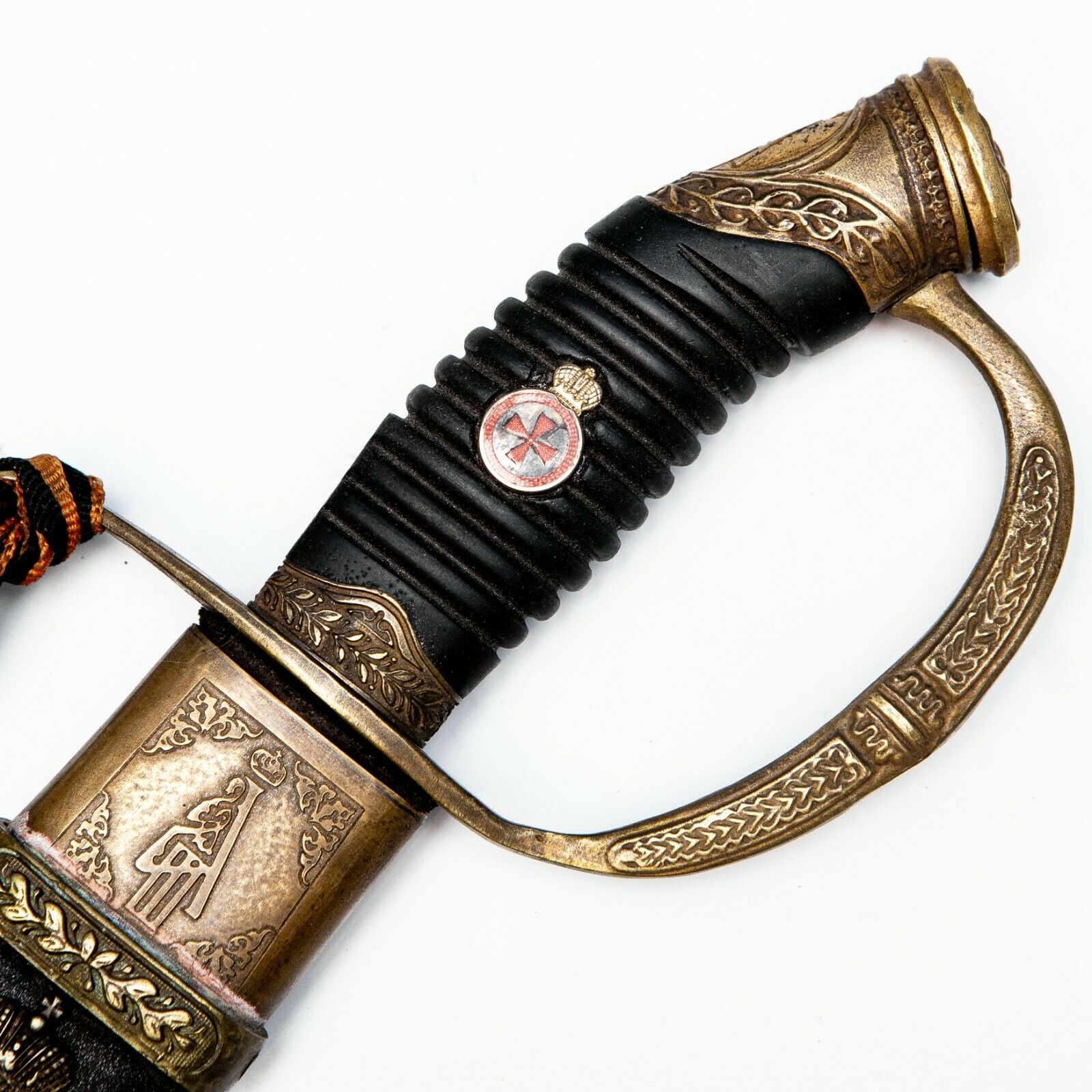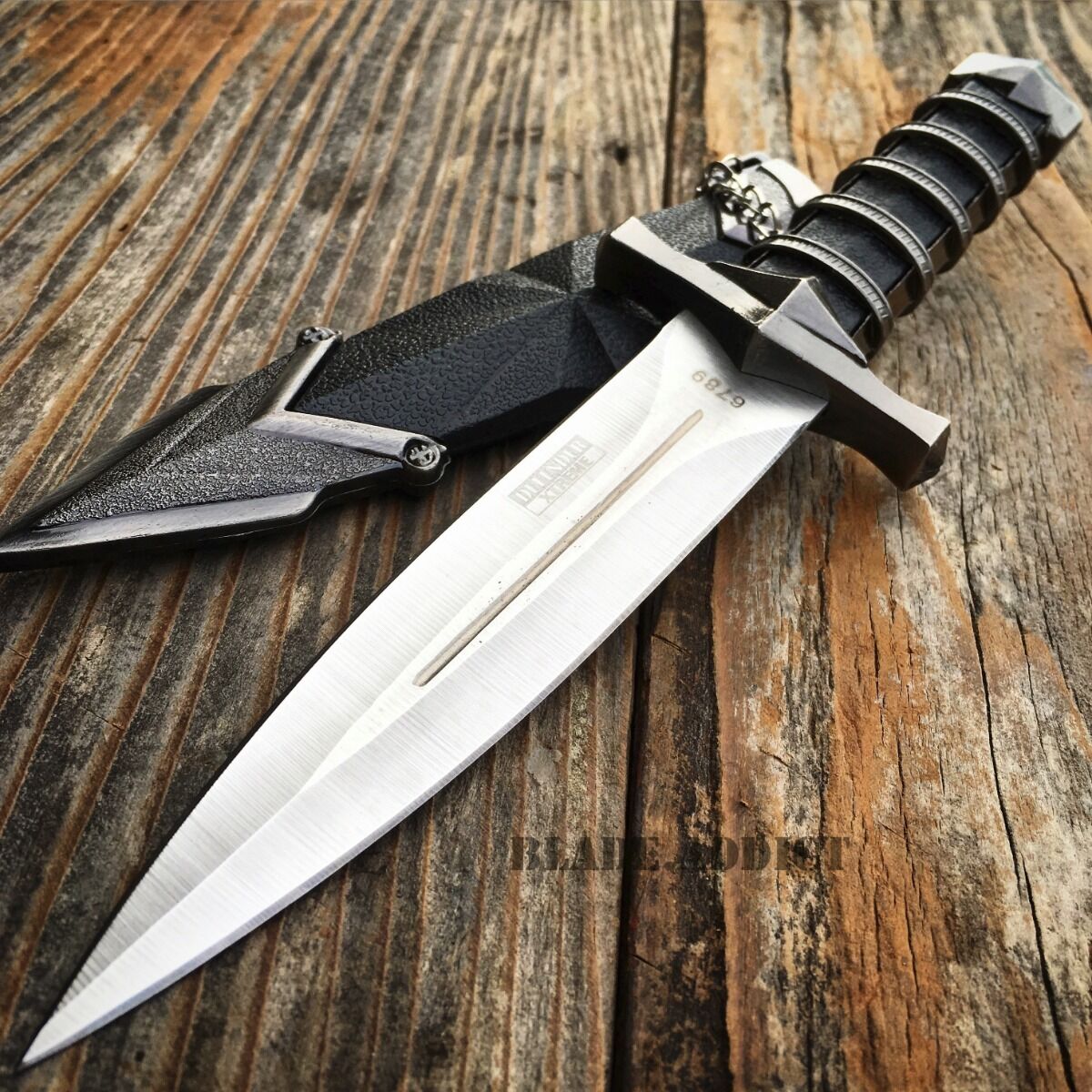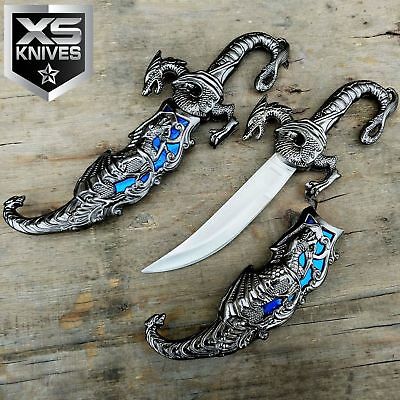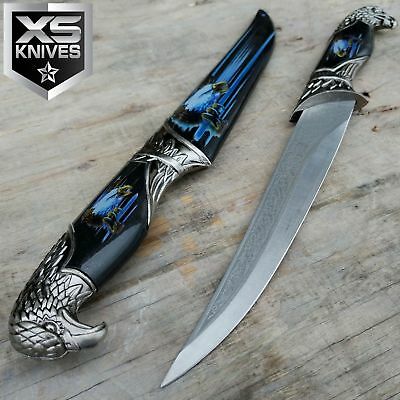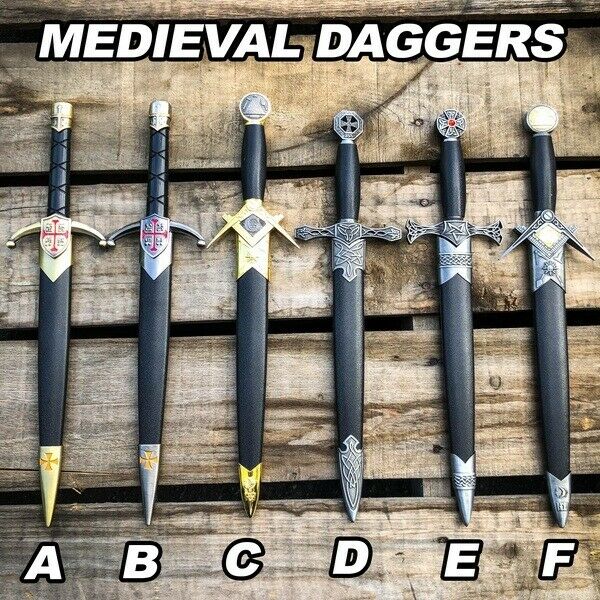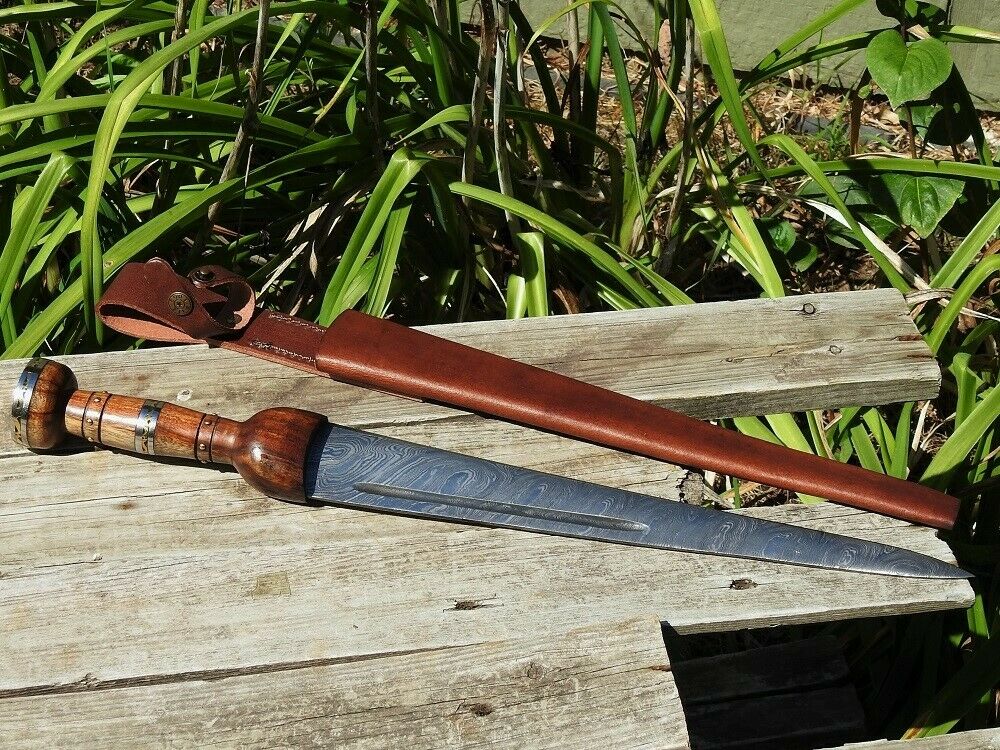-40%
Russian Caucasian Cossack Shashka 1913 Sword Caucasian Dragun Kindjal Zlatoust
$ 211.18
- Description
- Size Guide
Description
Hand made! Blade inscription "For excellent shooting", "For a fencing battle". Sword has awards - "For a fencing battle", "For excelent shooting", "For a fencing duel", The handle has the Saint Anne's award. Has the monogram of Alexander 3 on the handle and blade, Solingen. Cossack officer sword model 1881. Blade: Small curved steel blade, single-edged. The fighting end is double-edged. Arbitrary blades were also common. Ephesus: consists of a pen only. The handle has deep transverse grooves. Forked brass handle with lace hole. At the bottom of the handle is a brass bushing. Scabbard: wooden, covered with natural leather. Brass scabbard device.Delivery: 13.99$
Dimensions:
Dimensions mm (Measures approx.): Total length in the scabbard: 99~100
centimeters
Dimensions mm (Measures approx.): Length of the blade with handle: 95~96
centimeters
Dimensions mm (Measures approx.): Length of the blade without handle: 80~81
centimeters
The Imperial
award
of St. Anne is an order established in 1735 as a dynastic award of the Duchy of Holstein-Gottorp, and on April 5, 1797, introduced by the decree of Emperor Paul I into the award system of the Russian Empire to distinguish clergy, military, civil and court officials, as well as foreigners. The decree contained a provision stating that the Order of St. Anna "was perpetrated by the conferred of the All-Russian Empire" when Petr Fedorovich (Pavel Petrovich's father) "were reassured of His rights to the All-Russian Imperial Throne", that is, from November 7, 1742.
The statute of the order was approved in 1829. Had 4 degrees; the lowest, 4th degree was intended to be awarded only for military merit (the most junior officer's order). In terms of seniority, the order was one step lower than the Order of St. Vladimir and was the youngest in the hierarchy of orders of the Russian Empire until 1831. Since 1831, the Order of St. Stanislav was introduced into the hierarchy of the imperial and royal orders, which became one step below the Order of St. Anne in seniority. Since the establishment of the Order of St. Anna, hundreds of thousands of people have been awarded it.
In 1925, the second meeting of the cavalry chiefs of the Red Army (workers 'and peasants'
Red Army), which discussed the issue of adopting a new type of shashkas.
Of course, no one was going to seriously change anything - the blades of 1881 were very
perfect. After discussion, a new type of checker was approved - combining the blade of the former
dragoon model and the hilt of the Don Cossack saber. This shashka pattern was adopted on
weapons, but the first "real Soviet" checker appeared in November 1927, when
armament of the Red Army, a single shashka sample was introduced - the 1927 model. Single shashka 1927
differed from the dragoon shashka of 1881 in a less wide heel, a greater angle of inclination
shank and a single dimension now 32-in. (81.28 cm). It is the shashka of the sample 1927
was put into mass production.
The shashka was adopted by the command and command personnel of the cavalry of the Red Army, in
other types of troops - those persons of command and command personnel who were supposed to carry
horse service. Since 1932, the saber was worn only when in the ranks. Despite the fact that in
1940, new models of edged weapons for command and
the commanding staff of the Red Army, shashka arr. 1927 continued to be applied during the Great
World War II.
Since then, the Soviet military industry to the creation of combat drafts and other
cold weapons with a long blade did not return. Although the tradition of using shashkas in
as an award or gift weapon has not gone anywhere and is preserved even in our time,
the only large-scale "combat" Soviet shashkas were the 1927 samples.
The shashka of the Red Army of the 1927 model is made of structural spring steel 65g with
high strength, elastic, wear-resistant and viscous properties. Manganese in composition
steel is designed to increase its elasticity and tensile strength, resistance to shock loads.
Blade hardness using layer-by-layer heat treatment technology: 45-50 HRC.
Cossack Sword Shashka brand new
.
The knife is not sharpened.
total length: 1000 mm
Scabbard - wood, leather, etching.
Attention:
in the Manual of the Red Army Artillery Directorate for the operation of drafts of the 1927 model, it is emphasized that cutting is not allowed on solid objects (stones, metal ammunition and horse harness).
In the barracks arrangement, the oiled pieces are stored with elongated blades 100-150 mm. During long-term storage, the checkers are densely lubricated. When returning from the exercise, the checkers are wiped dry.
When checking the curvature of the eye, slight bends that do not affect the movement of the blade in the sheath and cannot be edited can be left.
Add me to your favorite sellers
Payment:
Payment is required within 3 days from the end of the auction. I accept PayPal.
The items will be sent within 1 business days after the payment is received. Please email me BEFORE bidding if you have questions.
Items must be returned in original condition with tags if applicable within 30 days of purchase.
Thank You for bidding.




